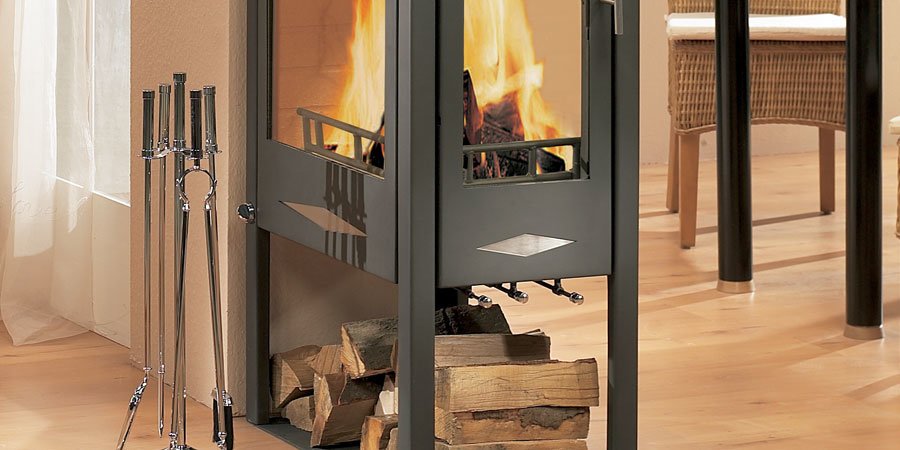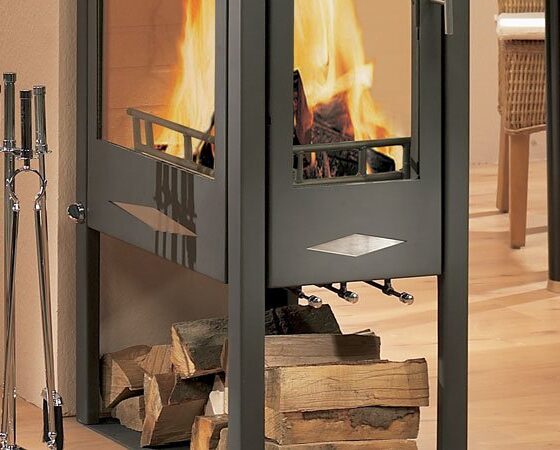

Energy
Is Wood Burning Sustainable For Your Home?
Wood is a classic heat source, whether we think about people gathered around a campfire or wood stoves in old cabins, but is it a sustainable source of heat in modern society? The answer is an ambivalent one. In certain settings, wood heat is an ideal solution, but for the majority of homes, it isn’t especially suitable. So what’s the tipping point?
Wood heat is ideal for small homes on large properties, for individuals who can gather their own wood, and who have modern wood burning ovens. A green approach to wood heat is one of biofuel on the smallest of scales.
Is Biofuel Green?
One of the reasons that wood heat is a source of so much divide in the eco-friendly community is that it’s a renewable resource and renewable has become synonymous with green. What wood heat isn’t, though, is clean or healthy. It lets off a significant amount of carbon and particulates, and trees certainly don’t grow as quickly as it’s consumed for heat.
Of course, wood is a much less harmful source of heat than coal, but for scientists interested in developing green energy sources, it makes more sense to focus on solar and wind power. Why, then, would they invest in improved wood burning technology?
Homegrown Technology
Solar and wind technology are good large-scale energy solutions, but when it comes to small-space heating, wood has its own advantages. First, wood heat is in keeping with the DIY spirit of homesteaders and tiny house enthusiasts. These individuals are more likely to be driven to gather their own wood and live in small spaces that can be effectively heated as such.
Wood heat is also very effective on an individual scale because it requires very little infrastructure. Modern wood stoves made of steel rather than cast iron are built to EPA specifications, and the only additional necessary tools include a quality axe, somewhere to store the wood, and an appropriate covering to keep it dry. And all the wood can come from your own land.
Wood heat is also ideal for people living off the grid or in cold areas prone to frequent power outages, as it’s constantly reliable. Even if the power goes out, you know that you’ll be able to turn up the heat. That’s important if you live somewhere like Maine where the winters can get exceedingly cold. People have even successfully heated a 40’x34’ home with a single stove.
Benefits Of Biomass
The ultimate question regarding wood heat is whether any energy source that’s dangerous on the large scale is acceptable on a smaller one. For now, the best answer is that with a growing population and limited progress towards “pure” green energy, wood should remain a viable option, specifically because it’s used on a limited scale. Biomass heat is even included in the UK’s Renewable Heat Initiative and minor modifications can make it even more sustainable.
Wood stoves, when embraced in conjunction with pellet stoves, geothermal heating, and masonry heaters, all more efficient forms of sustainable heat, should be part of a modern energy strategy. Ultimately, we’re headed in the direction of diversified energy – all of it cleaner – and wood has a place in the big picture, serving small homes and off-the-grid structures, while solar, wind, and other large-scale initiatives fuel our cities.


 Environment10 months ago
Environment10 months agoAre Polymer Banknotes: an Eco-Friendly Trend or a Groundswell?

 Environment11 months ago
Environment11 months agoEco-Friendly Home Improvements: Top 7 Upgrades for 2025

 Features9 months ago
Features9 months agoEco-Friendly Cryptocurrencies: Sustainable Investment Choices

 Features10 months ago
Features10 months agoEco-Friendly Crypto Traders Must Find the Right Exchange





























